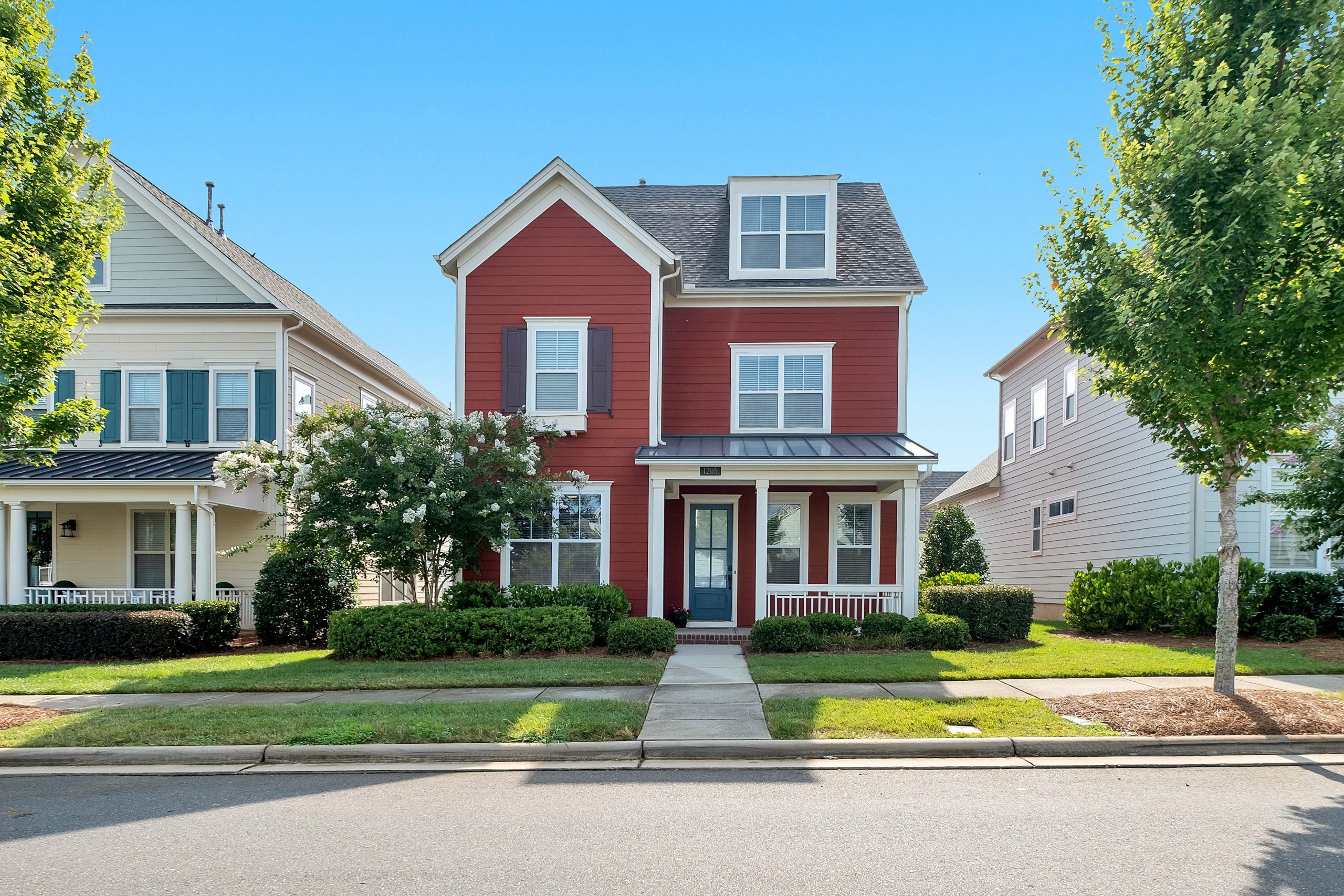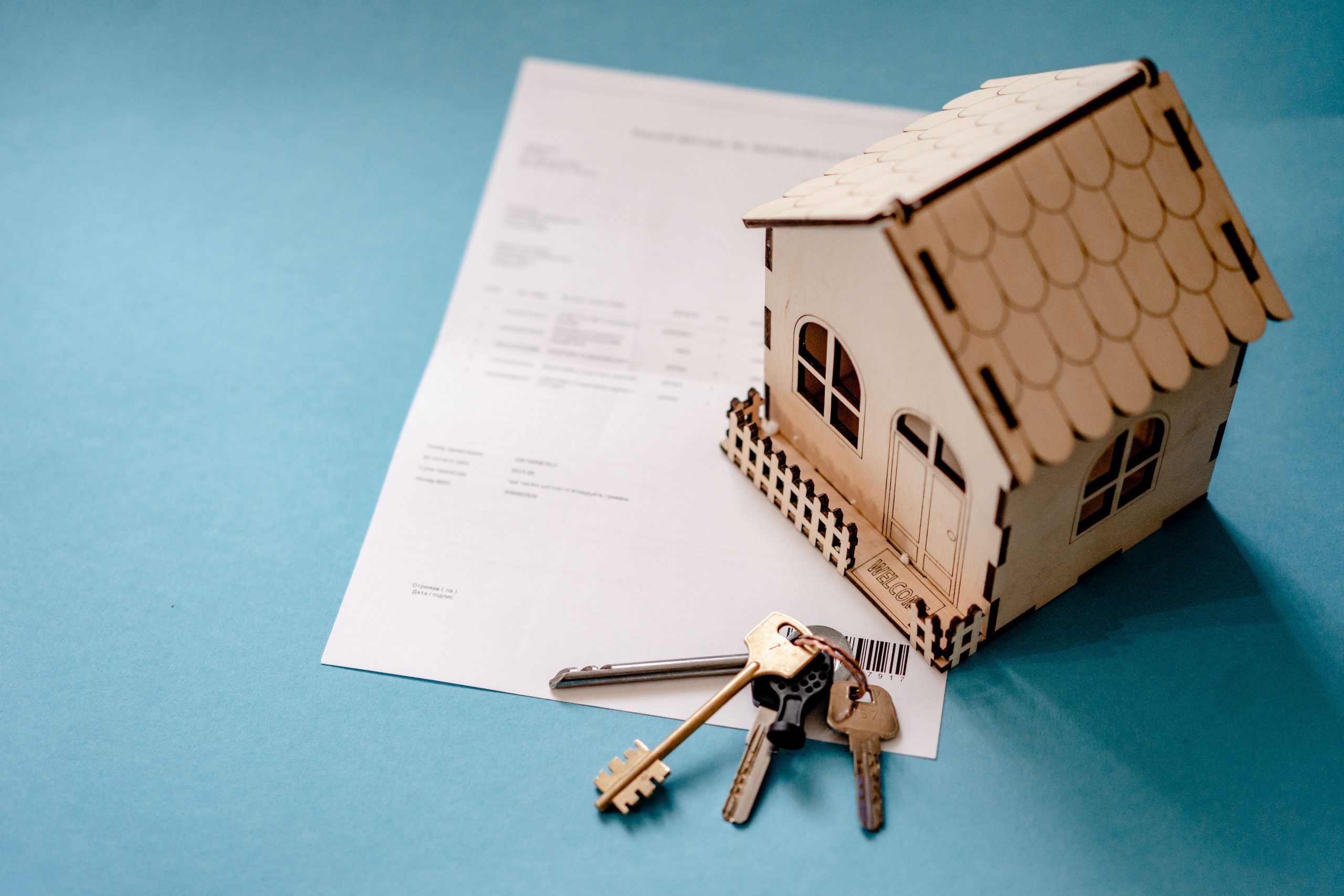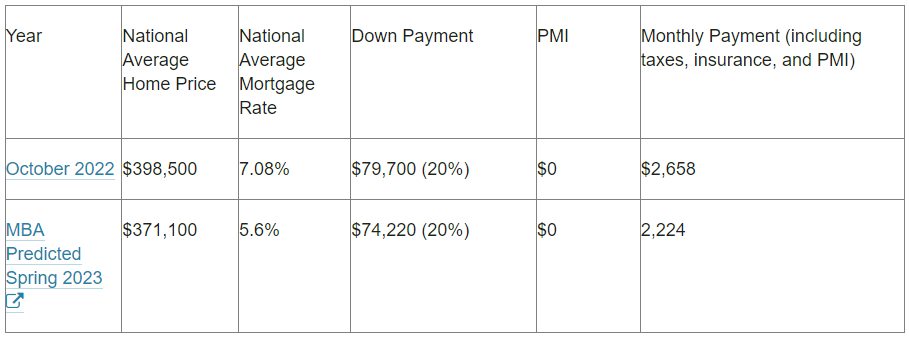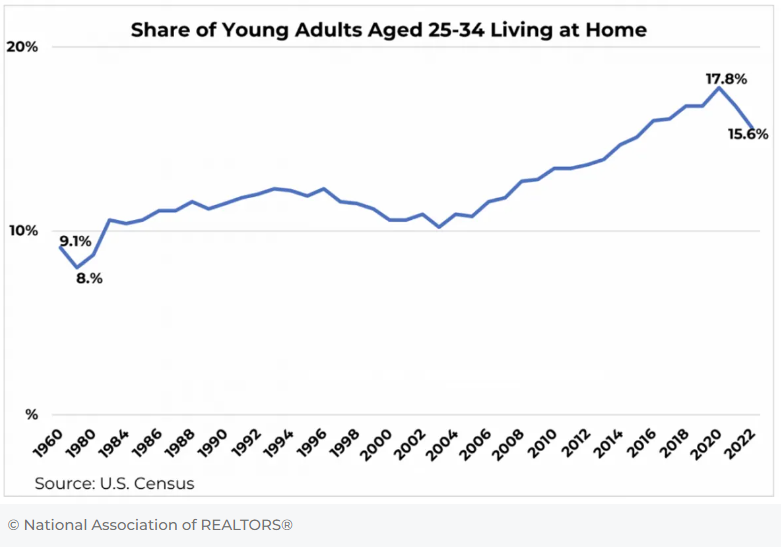4 Things First-Time Home Sellers Regret Most

Selling your home is a big decision, which is why you want to make sure you and your property are ready for it when the time comes. From setting an asking price to deciding when to list your home, there’s a lot you’ll need to consider as a seller. The last thing you want to feel once your home is sold is regret over some of the choices you made—which many people say they do.
According to a new Zillow survey, 84 percent of Americans who sold a home for the first time in the past two years wish they had done something differently. The poll reveals that many recent first-time sellers have regrets about the pricing, timing, or marketing of their home. To avoid these mistakes when it’s your time to list, it helps to understand the survey participants’ key errors.
Pricing Incorrectly
The most common thing participants in Zillow’s survey say they wish they had done differently is set a higher list price. Now more than ever, it can be difficult to decide on how much to list your home for. Pricing it too high could lead to a slower sale, but pricing it too low may leave you wishing you had listed it for more.
“This spring’s sellers are more likely to regret pricing their home too high,” said Zillow senior economist Nicole Bachaud. “The price their neighbor commanded a year ago may no longer be realistic. They need to adjust their expectations if they want to avoid having their home linger on the market.”
Ignoring Online Curb Appeal
Don’t underestimate the importance of virtual curb appeal when it comes to selling your home. About 90 percent of recent first-time sellers think something could have helped them get a higher sale price—and 39 percent of those respondents believe that better listing photos could have boosted their sale (25 percent say a virtual tour also might have helped).
Many prospective buyers look for homes online, which means you shouldn’t ignore that website listing. Consider creating a media package that includes high-resolution photography to help highlight your home’s best features. According to Zillow, listings that include a virtual home tour get 69 percent more views and 80 percent more saves.
Bad Timing
Twenty-five percent of people who took Zillow’s survey say they wish they had listed their home a different time. While the best time to sell is a personal choice, if you have flexibility, the optimal time to list a home is during the second half of April, says Zillow.
Timing the sale of a home with the purchase of another house is one of the biggest stressors for sellers. About 36 percent of first-time sellers wish they had known how long it would take for their home to sell. About 37 percent of sellers say selling their home on their timeline, with a flexible closing date, or selling quickly was their top priority.
Skimping on Repairs
Sprucing up your home before selling it may be worth the extra costs. According to Zillow’s survey, 25 percent of participants believe they could have gotten a higher sale price if they had invested in more home improvements and repairs. Despite this regret, most sellers (66 percent) report taking on at least two home improvement projects before selling and 78 percent believe those projects helped them sell their home.
“The right projects can pay off,” said Amanda Pendleton, Zillow’s home trends expert. “Sellers need to think strategically about their return on investment before diving into repairs and renovations. Landscaping, interior painting and carpet cleaning are the most commonly completed seller projects for good reason. They boost online curb appeal and send a powerful signal to a buyer that a home is well-maintained.”
Expect a competitive shopping season, despite few available homes

Though easing mortgage rates are bringing buyers back, don’t expect the fervor of recent years
- Buyers should expect to face intensifying competition over the next few months.
- Homeowners are largely staying put, so attractive listings will see strong interest.
- Affordability remains the biggest challenge for buyers and sellers, with both keeping a close eye on mortgage rates.
The fast-approaching spring home shopping season should feel a bit calmer than in recent years. Shoppers can expect competition for well-priced homes, but without the crowds of buyers that packed open houses like they did in 2021 and early 2022, according to a new Zillow® analysis.
“Affordability will still be a challenge for many buyers this year, but sellers who price and market their home competitively shouldn’t have a problem finding a buyer,” said Zillow senior economist Jeff Tucker. “The slight drop in mortgage costs since October should revive demand after last fall’s slump, especially in more affordable markets and neighborhoods, but we are unlikely to see competition approach the fever pitch seen in the last two years.”
Mortgage movement sets the stage
The market cooled dramatically in the second half of 2022, amid rising mortgage rates and two straight years of red-hot competition. But as mortgage costs bumped down from their peak in the fall, sales returned. Though sales still remain below where they were a year ago, they’ve rebounded significantly over the past few months.
Buyers today are typically spending roughly 31% of their household income on a mortgage — $1,595 a month — after a 20% down payment1. That’s $170 a month below the 34% of income required in October, but far above the 20%–22% they were spending in the ten years before the pandemic — the monthly cost of principal and interest was less than $900 in January 2019.
Still, even while affordability impacts the share of households looking to buy, demographics are contributing to demand through sheer numbers. Zillow’s 2022 national consumer survey found the median age of the first-time home buyer was 35 years old. The youngest members of the massive millennial generation are now entering their late 20s, the oldest are approaching their mid-40s, and the bulk will soon be hitting prime first-time home-buying milestones.
Spring outlook and what it means for buyers, sellers and prices
There are as few homes for sale to start the year as there were in 2021, which, at the time, was a new record for scarcity. But the market is far from the white-hot demand-side conditions of early 2021 and 2022, when ultralow mortgage rates triggered bidding wars over most listings.
Buyers should expect competition — especially in more affordable markets like Cincinnati and St. Louis — and at lower price points. Buyers will mostly be motivated by the life transitions that have always triggered home purchases — new jobs, marriages and births — and less by the deal of a lifetime on mortgage rates.
On the sellers’ side, well-priced, well-marketed homes will receive attractive offers during their first weekend on the market, but many listings will take longer and will need price cuts to sell. Last month, 22% of listings saw a price cut, more than any January since at least 2018.
Buyers and sellers waiting for home prices to either plunge or skyrocket will be disappointed. Instead, prices are forecast to move on a slow, boring trajectory like they have historically, and inch a little higher in spring after seasonal winter lows.
While heat in the housing market has ticked up in the past few months, there’s no guarantee it will continue along this path. The courses of inflation, unemployment and especially mortgage rates will determine what comes next.
Mortgage rates will affect both demand and supply significantly. If rates move lower, toward 6% or below, they will bring more buyers into the fold and make it more palatable for homeowners to sell, increasing supply. If rates hover in the upper 6% range or above, buyers may once again put their house hunt on hold.
“The housing turnaround since November has coincided with what are typically the weakest three months of the year — forecasting the future off that can be dicey,” Tucker said. “The economic news from earlier this winter raised hopes for a soft landing of the economy and housing market, but the risk of renewed inflation or even a recession is still significant, and either would have a serious impact on the housing market.”
Expect a Competitive Shopping Season, Despite Few Available Homes

Though easing mortgage rates are bringing buyers back, don’t expect the fervor of recent years
- Buyers should expect to face intensifying competition over the next few months.
- Homeowners are largely staying put, so attractive listings will see strong interest.
- Affordability remains the biggest challenge for buyers and sellers, with both keeping a close eye on mortgage rates.
SEATTLE, Feb. 16, 2023 /PRNewswire/ — The fast-approaching spring home shopping season should feel a bit calmer than in recent years. Shoppers can expect competition for well-priced homes, but without the crowds of buyers that packed open houses like they did in 2021 and early 2022, according to a new Zillow® analysis.
“Affordability will still be a challenge for many buyers this year, but sellers who price and market their home competitively shouldn’t have a problem finding a buyer,” said Zillow senior economist Jeff Tucker. “The slight drop in mortgage costs since October should revive demand after last fall’s slump, especially in more affordable markets and neighborhoods, but we are unlikely to see competition approach the fever pitch seen in the last two years.”
Mortgage movement sets the stage
The market cooled dramatically in the second half of 2022, amid rising mortgage rates and two straight years of red-hot competition. But as mortgage costs bumped down from their peak in the fall, sales returned. Though sales still remain below where they were a year ago, they’ve rebounded significantly over the past few months.
Buyers today are typically spending roughly 31% of their household income on a mortgage — $1,595 a month — after a 20% down payment1. That’s $170 a month below the 34% of income required in October, but far above the 20%–22% they were spending in the ten years before the pandemic — the monthly cost of principal and interest was less than $900 in January 2019.
Still, even while affordability impacts the share of households looking to buy, demographics are contributing to demand through sheer numbers. Zillow’s 2022 national consumer survey found the median age of the first-time home buyer was 35 years old. The youngest members of the massive millennial generation are now entering their late 20s, the oldest are approaching their mid-40s, and the bulk will soon be hitting prime first-time home-buying milestones.
Spring outlook and what it means for buyers, sellers and prices
There are as few homes for sale to start the year as there were in 2021, which, at the time, was a new record for scarcity. But the market is far from the white-hot demand-side conditions of early 2021 and 2022, when ultralow mortgage rates triggered bidding wars over most listings.
Buyers should expect competition — especially in more affordable markets like Cincinnati and St. Louis — and at lower price points. Buyers will mostly be motivated by the life transitions that have always triggered home purchases — new jobs, marriages and births — and less by the deal of a lifetime on mortgage rates.
On the sellers’ side, well-priced, well-marketed homes will receive attractive offers during their first weekend on the market, but many listings will take longer and will need price cuts to sell. Last month, 22% of listings saw a price cut, more than any January since at least 2018.
Buyers and sellers waiting for home prices to either plunge or skyrocket will be disappointed. Instead, prices are forecast to move on a slow, boring trajectory like they have historically, and inch a little higher in spring after seasonal winter lows.
While heat in the housing market has ticked up in the past few months, there’s no guarantee it will continue along this path. The courses of inflation, unemployment and especially mortgage rates will determine what comes next.
Mortgage rates will affect both demand and supply significantly. If rates move lower, toward 6% or below, they will bring more buyers into the fold and make it more palatable for homeowners to sell, increasing supply. If rates hover in the upper 6% range or above, buyers may once again put their house hunt on hold.
“The housing turnaround since November has coincided with what are typically the weakest three months of the year — forecasting the future off that can be dicey,” Tucker said. “The economic news from earlier this winter raised hopes for a soft landing of the economy and housing market, but the risk of renewed inflation or even a recession is still significant, and either would have a serious impact on the housing market.”
1 The share of median household income needed for a new 30-year fixed-rate mortgage on a typical U.S. housing unit, measured by the Zillow Home Value Index.
Article Courtesy of Zillow
Looking ahead at the housing market in 2023

Rollercoasters are designed to take riders on an unpredictable journey with periods of exhilaration, intensity and fear. Kind of sounds like the housing market over the last twelve months, doesn’t it?
2022 was truly a roller coaster year in housing. Just to look at one metric that we’ve been following all year, the average 30-year fixed mortgage rate in January of 2022 was 3.60%–in December of 2022 that rate stood at 6.39%. That was just a few weeks after it average rate reached 7.20%, its highest level in twenty years.
While signs of a changing rate environment were evident a year, we had no way of knowing how much mortgage rates were going to rise in 12 months. Some things that affected those changing rates, like war in Ukraine and rising inflation, had yet to take hold. So needless to say, it’s a much different housing market that we preview heading into 2023 than it was last year.
Where will rates go?
The number one concern for most people who are interested in buying a home in 2023 is what is going to happen to mortgage rates. Rates have gone up in relation to the Federal Reserve’s federal funds rate, which has risen from near zero at the beginning of 2022 to around 4.25% by the end of the year. The Fed is expected to keep increasing their rate in order to get inflation under control, but at a slower pace in the first part of 2023.
That should affect mortgage rates, allowing them to continue dropping. As mentioned above, national average rates hit 7.20% at the end of October, then started dropping. This was partially due to good news on inflation and the Fed indicating that they were going to ease up on rate hikes.
Expert predictions on rates
Many of the most respected industry watchers are predicting that rates will continue to come down in 2023. The Mortgage Bankers Association (MBA) and the National Association of Realtors® (NAR) both are forecasting that mortgage rates come down throughout the year, and finish 2023 in the mid-5% range. Fannie Mae and Freddie Mac take less optimistic views, seeing rates hovering in the high-6% range and finishing the year near 6.2%-6.5%.
The wild card in this outlook is inflation. The Fed is trying hard to put a dent in rising inflation, and the latest reports suggest that inflation is at least slowing down. If this continues, you can hope to see mortgage rates behave like the MBA and NAR are predicting. However, if inflation rises, rates may stay near where they are now—or even go up—for the year.
Home prices: Up or down?
Tracking home prices can be a good news/bad news proposition. When home prices go up, that’s good news for homeowners and sellers, but bad news for homebuyers. When they go down, that could be seen as bad news for homeowners as their home’s value is also theoretically going down, as well.
However, high home prices along with high rates have priced many would-be homebuyers out of the market. And that’s been bad news for sellers lately, as there are fewer buyers and therefore lower demand. So, a drop in home prices, along with a drop in mortgage rates, would be great news for everyone.
Home price forecast
The MBA sees home prices remaining stable throughout the year, with projected median price of total existing homes starting the year around $366,000 and ending the year around $377,000. Lawrence Yun, chief economist at NAR, foresees similar price stability, with median home prices increasing just 0.3% according to their forecasts. “Half of the country may experience small price gains, while the other half may see slight price declines,” Yun says.
Real estate website Redfin is also predicting good news for homebuyers. Their forecast is for the first year-over-year decline in the last decade, with an average home price at $368,000. So while home prices aren’t dropping to where they were pre-pandemic by most of these forecasts, they are likely staying near where they’re ending 2022 as we move ahead to 2023.
Looking ahead at housing affordability
More than the mortgage rate or the price of the home, most homebuyers start with this question: Can I afford it? Housing affordability refers to the amount of a homeowner’s monthly budget their home payments represent. Over the last twelve months, this has gotten worse and worse, making it extremely hard for first-time homebuyers in particular to purchase a home.
If mortgage rates come down, and home prices are at a lower average than last year, that means that housing affordability will come down. Hopefully, in 2023 more people will be able to answer yes to that question.
Let’s take a look at what would happen if some of the above predictions would actually happen. As an example, we’ll compare the MBA’s predictions for average home prices and mortgage rates in spring of next year with an average priced home and mortgage rate in October of 2022, assuming a 20% down payment in both cases.

*Sample rate provided for illustration purposes only and is not intended to provide mortgage or other financial advice specific to the circumstances of any individual and should not be relied upon in that regard. Guaranteed Rate Affinity cannot predict where rates will be in the future.
That’s a difference of $434 a month, with $5,480 less spent on a down payment, which could make a big difference for many and turn a potential homebuyer into a homeowner.
New construction outlook
One reason that home prices have gone up so much is that there hasn’t been enough homes available to buy. The low rates we saw during 2020 and 2021 made this problem worse, as more people were looking to purchase a home, but it’s a problem with origins that started years before the pandemic. Housing inventory has been dropping since 2010.
One solution to not enough homes available to buy is to build more homes. However, rising mortgage rates scared off many builders from starting new projects, as builder confidence went down for 11 consecutive months in 2022.
The MBA has watched new housing projects that began work, known as new housing starts, go from 1.72 million at the beginning of 2021 down to 1.461 million in the third quarter. The projected average of new housing starts for 2022 was 1.567million.
They’re expecting that downward trend to continue into 2023, forecasting 1.472 million housing starts in 2023. That likely won’t be enough to bring relief to the inventory issue and therefore won’t put significant downward pressure on home prices in the new year.
Trends to keep an eye on
With those four major factors accounted for, what will that mean for the rest of the housing market? Here are some more housing market predictions:
Hot months for homes
In most years, spring and summer are the most popular times to buy a home, but the pandemic threw that trend out the window. With rates so low in 2020 and 2021, along with the increased flexibility most people had due to work-from-home and online school, we saw demand spike throughout the year.
Now that rates have increased, many families have settled back into their pre-pandemic work and school routines. As Jeremy Collett, Executive Director of Capital Markets at Guaranteed Rate, says, “No matter what, I think we will see a return to seasonality, with a focus on home sales in spring and summer when people are more inclined to move.”
From bonkers to a buyer’s market
One of the most memorable parts of the housing market over the last few years was how much of a seller’s market it became. Houses would sell in less than 24 hours after listing, above asking price, with inspections waived. That’s how desperate buyers were to close on a home with the low rates we were seeing then.
But thankfully that’s in the past. We’ve seen demand dip as rates have gone up in the past year, and that should continue. Danielle Hale, chief economist for Realtor.com, wrote in her housing forecast, “There will be more homes for sale, homes will likely take longer to sell, and buyers will not face the extreme competition that was commonplace over the past few years.”
The importance of a fast, frictionless experience
Real estate happens more and more in a digital landscape these days. From finding a home online, to applying for a mortgage and even closing, almost the entire process can take place on a screen. But that makes customer service, speed, and efficiency all the more important.
Guaranteed Rate has been at the forefront of this revolution, from introducing the first Digital Mortgage, to FlashClose® technology and MyAccount. And we’ll continue to lead, with exciting new apps and tools on the way to make your financial life easier and give you an advantage when buying a home. All of this tech is backed up by our mortgage loan experts, who are always ready to help if you need any.
It’s our commitment to helping make the process of getting a home easier for you that we are optimistic about the year ahead. When you work with a Guaranteed Rate Affinity loan officer, you’ll know that you’ll have an expert on your side to help you realize your dream of homeownership, no matter what happens in the market in 2023.
Consumer confidence in housing finally rises, thanks to falling home prices

Mortgage rates are still twice what they were a year ago, but home prices have been falling since June, and that’s finally making consumers feel better about what had been an overheated, highly competitive housing market.
A monthly housing sentiment index from Fannie Mae showed sentiment improving from November to December. The index is still lower than it was a year ago and just slightly off its record low set in October and November.
On selling, however, sentiment continued to drop. The share of respondents saying now is a good time to sell dropped to 51% from 54%, while the share saying now is a bad time to sell increased.
More consumers now believe home prices will fall in the next 12 months, and more also said they believe mortgage rates will come down.
Prices in November, the most recent measurement, were 2.5% lower than the spring 2022 peak, according to CoreLogic. They were still over 8% higher year over year, but that annual comparison is now half of what it was in June.
The average rate on the popular 30-year fixed mortgage hit a recent high of 7.37% in October but then fell back into the mid-6% range throughout November and into December. As of last Friday it had dropped to 6.2%, according to Mortgage News Daily.
That tension will continue to drive home sales lower in the coming months, Duncan said.
Adding to the confidence in housing, the share of consumers who said they were concerned about losing their jobs in the next 12 months dropped from 21% to 17%. Fewer, however, said their household income is significantly higher than it was a year ago.
With the housing market now in its historically slow winter season, some agents are reporting activity is “frozen.” Pending home sales, which represent signed contracts on existing homes, dropped more than expected in November, suggesting that closed sales in January will be lower as well.
Those sellers who are braving the housing chill are offering more concessions: Roughly 42% of sellers did so in the fourth quarter, the highest share in recent years, according to Redfin, a real estate brokerage. That’s up from just over 30% in both the previous quarter and the fourth quarter of 2021, and is higher than the previous high of 40.8%, notched during the three months ending July 2020, at the start of the Covid pandemic.
Data and Analysis on Wildfires and Insurance

Wildfires are a reality for many Californians, and by analyzing multiple data sets over several years the Department can identify trends affecting the insurance market. Data and its objective analysis have driven actions by Insurance Commissioner Ricardo Lara focused on preserving available and affordable insurance options for homeowners and businesses. As the state regulator, with statewide jurisdiction, the Department can provide unique datasets that promote public understanding of insurance market trends, empowering local jurisdictions and consumers with important statewide or local context for decision-making. The Department collects data from insurance companies, and in some cases directly from California businesses, and makes it available through our public website directly to the public, the Governor’s Administration and Legislature, and other stakeholders. The Department will continue to update this web page as new data and analysis becomes available. Data questions related to this page can be directed to: ClimateStudies@insurance.ca.gov. Policyholders and members of the public may direct questions relating to specific cancellation, non-renewal, or other insurance transactions to our Consumer Services Division Help page.
Residential data: Annual Insurance Policy Count Data
Since 2018, annual counts of new, renewed, and non-renewed homeowners and dwelling fire policies have been collected from admitted insurance companies by the Department to better understand statewide and geographical trends in residential insurance markets facing wildfire risks. Annual counts of California FAIR Plan policies and overall counts of surplus lines policies are also collected. Individual, annually released Nonrenewal Data Fact Sheets are provided below, with the 2019 Fact Sheet including data from 2015-2018.
- Statewide Data Fact Sheets for new, renewed, and non-renewal data collected by the Department from 2015-2021 provide an opportunity to review multi-year trends for insurance non-renewals and FAIR Plan policy numbers among residential insurance policies.
- County-level breakdowns of new, renewed, and non-renewal data provide a more specific information for each of California’s counties.
- ZIP Code-level breakdowns of new, renewed, and non-renewal data.
Statewide Commercial Insurance Data Survey, with an emphasis on agriculture
To inform strategies for increasing the availability of agricultural insurance and additional types of commercial insurance, the Department collected coverage limits, premiums, losses, and claims related to wildfires from admitted insurance companies.
- View the fact sheet on commercial insurance (released October 2021)
Wildfire Risk Information Reporting
Report and Data File including fire and wildfire related losses, segmented by wildfire risk score, collected from admitted insurance companies every two years. The Report is produced pursuant to California Insurance Code Section 929.
Insurance Companies Offering Home and Community Hardening Incentives
Companies listed in this resource offer pricing incentives for a home hardening actions and community mitigation designations, including actions listed in the Safer from Wildfires Framework.
Find Insurance Companies That Write in Higher Fire Risk Areas
The Home Insurance Finder allows you to search for insurance companies and licensed agents/brokers who have been identified to sell homeowners, renters, condominium, or mobile home insurance. You can narrow your search to insurance companies that may write in higher fire risk areas.
https://www.insurance.ca.gov/01-consumers/200-wrr/DataAnalysisOnWildfiresAndInsurance.cfm


 Facebook
Facebook
 X
X
 Pinterest
Pinterest
 Copy Link
Copy Link





